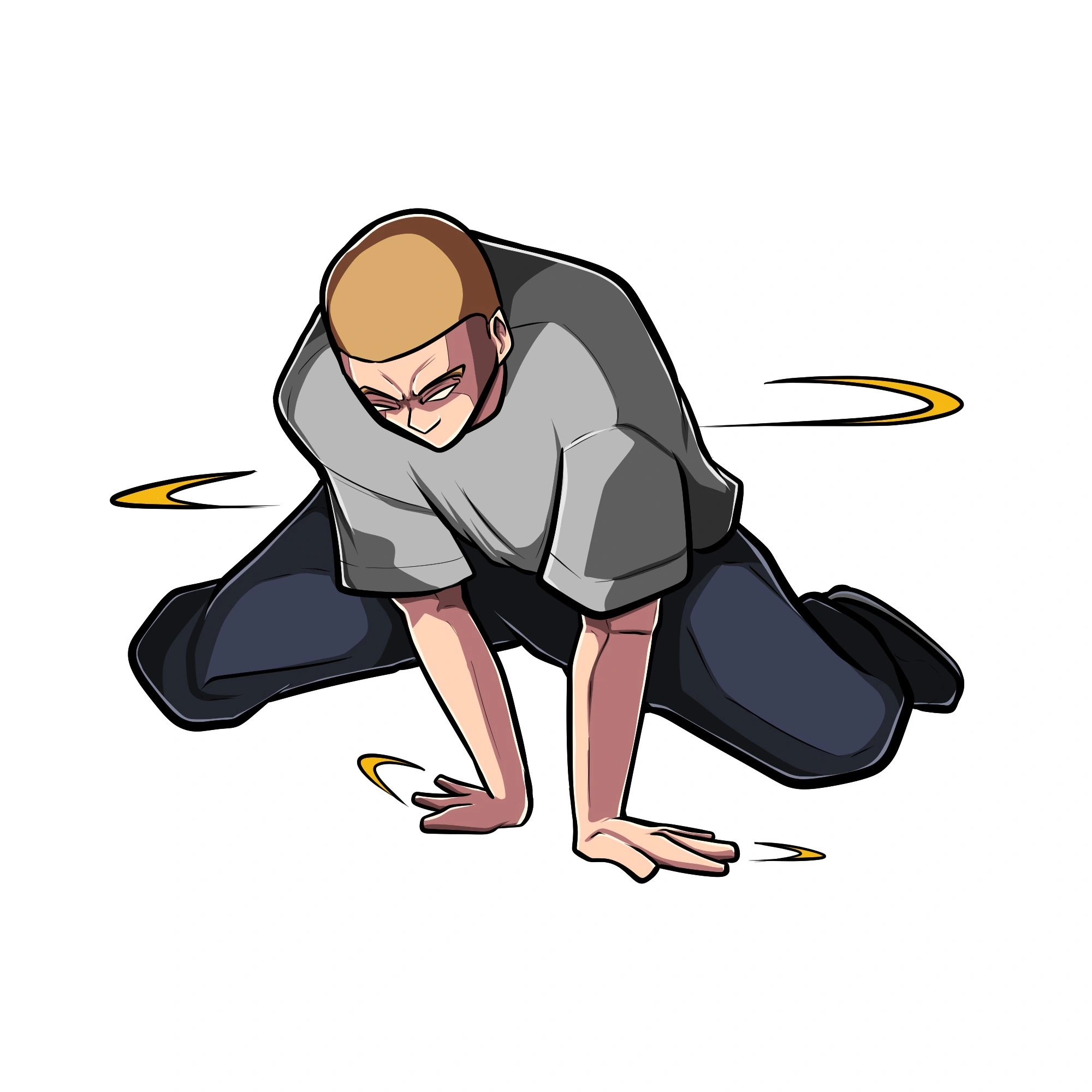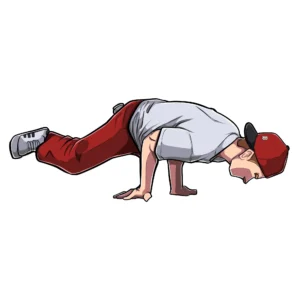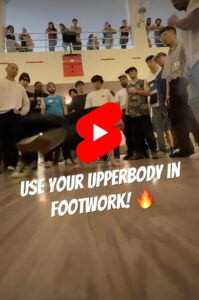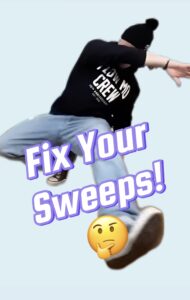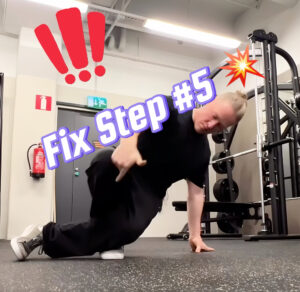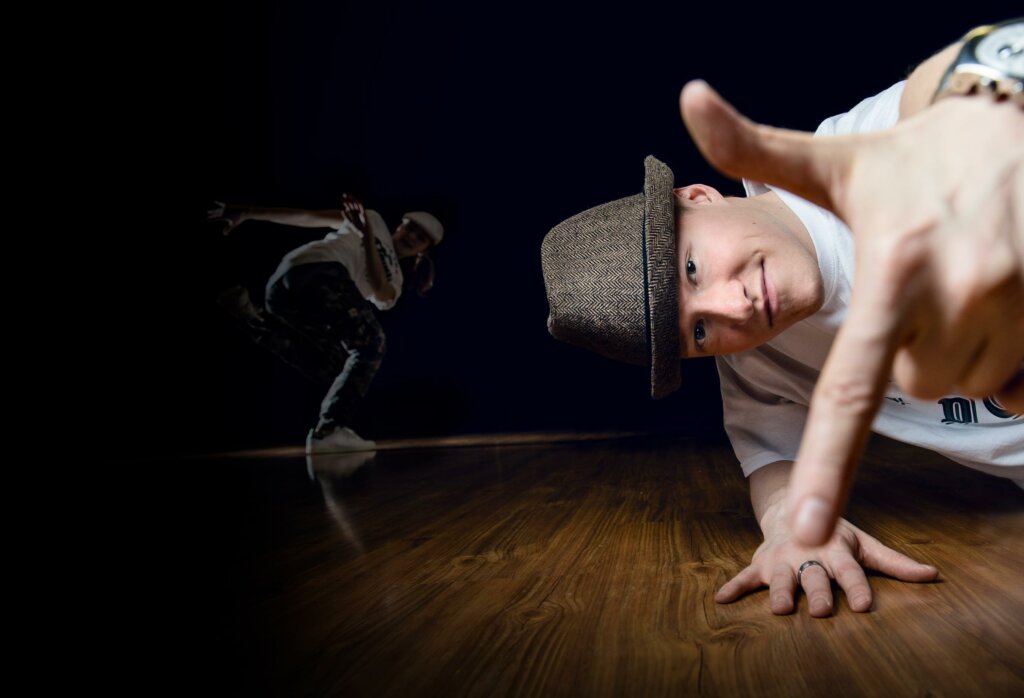Floats are among the moves that have inspired breakers worldwide since the very beginning of breaking as a style. Look up any list of top 10 breakdance moves, and you’ll likely spot one or more of these moves.
But what are floats breakdance moves, and how do you begin adding them to your sets? Let’s dive into these power moves, where they come from, and the steps to follow to pull off your first float.
What are Floats?
The floats move doesn’t pertain directly to a specific move today. Although they’re an original style, the evolution of breaking has resulted in them being referred to as an entire category of power moves.
However, initially, they were another name for turtles. A turtle is a move where a dancer supports their entire body weight using their elbows planted into their lower abdomen, with their legs tucked in to resemble a turtle’s shell. Even though these power moves are believed to require immense strength, it’s all about balance.
Float Variations in Breakdancing
Since the float has evolved so much from turtles, there’s a near-infinite number of variations. Learning how to do floats will enable you to flip your moves to keep your sets fresh in any environment.
Here’s a list of a few floats:
- UFO – This is a variation of the classic turtle, with the movement being largely the same. The difference is the arms are extended and locked.
- Deadman – Similar to UFOs, a deadman is where the legs are held straight and locked together behind the body. It’s also one of the most common movements found in floor gymnastics. B-boy Junior is well-known for his deadman floats.
- Boomerang – This float is performed with the legs in front held in a V shape while the hands are between the thighs. The breaker then uses their hands to walk in a circle.
Learning how to breakdance will inevitably lead to learning how to do floats at some point. Over time, every variation can result in unique variations by changing up little details, such as leg positioning.
The History of the Floats Move
All top b-boys and b-girls will incorporate different floats into their sets, as they are considered foundational moves that make this pillar of hip-hop what it is. But where do these moves come from?
Although they have changed over time, the original floats move (turtles) was one of the earliest moves to emerge on the breakdancing scene. Today, the invention of the move is attributed to P. Man in 1979.
It didn’t take long for them to evolve, with Powerful Pexster developing a faster, more modern version in 1981. The truth about the foundation for these moves is that 1981 was the starting point for the types of float we know today.
Powerful Pexster was instrumental in the popularity of these moves and in training some of the most famous names in breaking. For example, “Turtle Master” Buck 4 learned how to do these moves under the tutelage of Powerful Pexster.
Although it took P. Man to bring the turtle to breaking, there’s evidence that they have been performed in Northern Nigeria since 1956. However, most historians believe this is a mere coincidence, and floats breakdance moves were inspired by gymnastics skills, like Russian Wendeswings, which have an uncanny resemblance to the deadman float.
In terms of variations, such as the “walks” float class, these were developed by b-boy Handyman sometime in the early 1980s. Unlike the conventional float, these require much more strength and an entirely different technique.
How to Do Floats for Beginners
Every b-boy should learn power to add dynamism and flare to their sets, but where should you begin?
The key to longevity in breaking is to start small and avoid overstretching yourself initially, as this can lead to injury. Although novices may see it as an exercise in strength, it’s all about technique.
As with developing the 14 styles of footwork or how to windmill, mastering the foundations focuses more on the basic technique rather than adding flare at this stage. Here’s what you must know about performing your first float, which will be a basic turtle.
Step One – Get Into the Handstand
The handstand represents the beginning of any float. If you can’t already do one, it’s worth taking courses to master the technique. Remember, it’s not about strength but balancing and shifting your body weight.
Start by squatting down and placing your hands on the ground in front of you. Spread your fingers and “grip” the floor to establish a stable base. Your arms should be straight, with your shoulders directly above your wrists. Use your legs to push yourself into the air and balance on your hands.
Step Two – Pull Your Legs In
At this point, you should be balanced on your hands with your legs behind. The next step is to make the turtle shell by lowering your legs and bringing them toward your elbows.Your elbows will be supporting your weight while positioned in the sides of the abdomen, this is commonly referred to as the stab.
Generally, the closer you can bring them, the better, but everyone has a different level of flexibility, so don’t worry if you can’t go all the way at this stage.
Step Three – Establish Your Leg Position
Practice extending your legs outward or trying one-legged variations to switch things up. This is all part of the perfect practice formula enabling gradual progression.
Step Four – Incorporate Motion
Beginners should practice moving their hands in a clockwise or counter-clockwise circle. This is done by moving one hand to the left or right and following with the other. Again, the goal is to maintain your balance. You can also use your legs to push and create momentum.
Conclusion
Floats breakdance moves are essential to learn as part of building out your sets, whether breaking for fun or in a competitive setting.
The fastest way to progress isn’t through solo training but by working with an experienced breaker. The true importance of teaching is showing you the ropes and building your confidence.
At the B-Boy & B-Girl Dojo, we offer specialized courses with some of the biggest names in the industry. Get busy and accelerate your progress by enrolling in our remote courses today.

